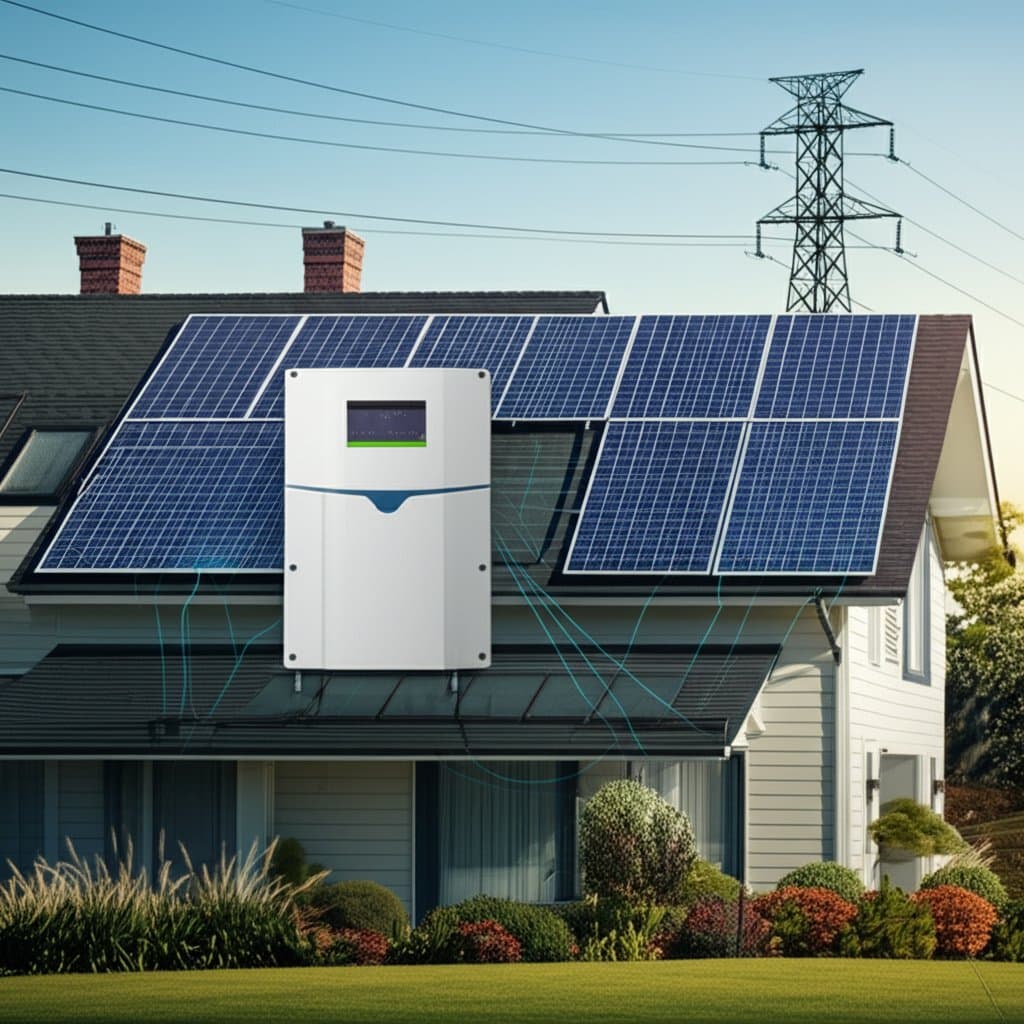Smart Inverters: Generating Revenue Through Grid Support in 2025
Navigating solar options involves understanding panels, storage solutions, and utility incentives. One emerging component stands out for its potential impact: the smart inverter. These units convert direct current from solar panels into alternating current for household use while also interacting with the grid to maintain stability and create financial benefits for owners.
Homeowners familiar with net metering or net billing recognize how excess solar energy offsets utility costs. Smart inverters extend this framework by enabling real-time responses to grid needs, such as balancing frequency and voltage. In return, utilities or grid operators compensate participants through dedicated programs. This guide details the mechanics, anticipates forthcoming initiatives, and outlines preparation steps for your solar installation.
Mechanisms for Homeowner Revenue from Smart Inverters
Grid operators increasingly value ancillary services like voltage regulation and frequency response, compensating providers via established markets. When a smart inverter delivers these functions, it generates quantifiable benefits that translate into credits or payments for the owner.
Consider a typical 7-kilowatt solar array producing approximately 1,300 kilowatt-hours per kilowatt annually, totaling around 9,100 kilowatt-hours yearly. At a utility export rate of 15 cents per kilowatt-hour, this yields about 1,365 dollars in annual credits. Participation in smart inverter programs could add 100 to 300 dollars more each year, varying by regional rules and activation frequency.
Such supplementary earnings accelerate financial recovery. For a system costing 18,000 dollars pre-incentives with a 30 percent federal tax credit, the effective expense drops to 12,600 dollars. Combining standard offsets with grid support income near 1,600 dollars annually results in an eight-year payback, followed by ongoing profits for 10 to 15 additional years.
Essential Features in Smart Inverters
Selecting solar components requires verifying compliance with current smart inverter standards. Prioritize models equipped with:
- Reactive power control to regulate voltage levels
- Frequency ride-through to remain operational amid grid fluctuations
- Remote communication interfaces for coordination with operators
- Automatic firmware updates to align with regulatory changes
- Data encryption protocols to safeguard user privacy
These capabilities position your setup for program eligibility. Recent inverter designs incorporate them standardly, though legacy units often lack such functionality. For older systems, consult an installer to evaluate upgrade or replacement options based on cost and compatibility.
Simplified Explanation of Smart Inverter Operations
Solar panels capture sunlight, where photons energize electrons in silicon cells to produce direct current. The inverter then transforms this into alternating current synchronized with the grid's voltage and frequency requirements.
Smart inverters advance this process by continuously monitoring grid parameters, up to dozens of times per second, and modifying output as needed. They manage reactive power, the component that flows back and forth without net energy transfer, to sustain voltage equilibrium. During high-voltage scenarios, the inverter absorbs excess reactive power; in low-voltage conditions, it supplies more. Homeowners experience this regulation seamlessly in the background.
Steps to Equip Your System for Grid Participation
Qualifying for grid service opportunities demands proactive measures. Begin by:
- Verifying inverter standards compliance through manufacturer specifications.
- Installing the latest firmware to activate communication protocols.
- Registering for utility pilots or upcoming enrollment periods, often via online portals.
- Ensuring reliable internet access for real-time data transmission.
- Monitoring system outputs, including voltage and reactive power, through dedicated apps.
Early preparation allows immediate revenue capture upon program rollout, maximizing your solar asset's value.
Benefits of Integrating Smart Inverters Today
Adopting smart inverters not only diversifies income but also enhances overall system resilience and efficiency. Homeowners contribute to a more stable local grid, reducing outage risks and supporting broader renewable integration. As 2025 programs expand, early adopters gain a competitive edge in energy economics, turning solar investments into sustained, multifaceted returns.
Frequently Asked Questions
What distinguishes a smart inverter from a standard one?
A smart inverter interacts with the grid for dynamic adjustments in power flow and stability support, whereas a standard model performs only basic direct-to-alternating current conversion.
Is retrofitting an existing solar setup with a smart inverter feasible?
Yes, typically. Installers can swap in a compatible smart unit that integrates with current panels and electrical infrastructure, often with minimal disruption.
